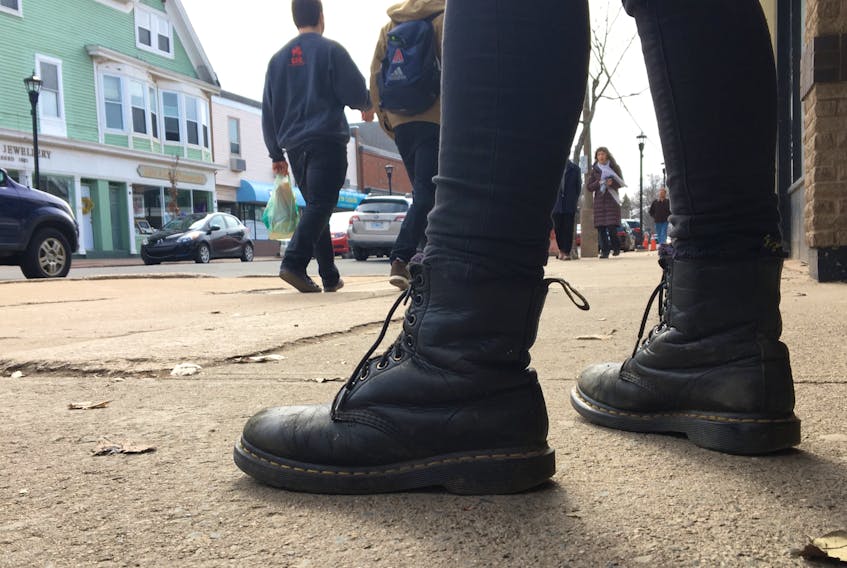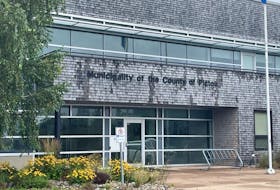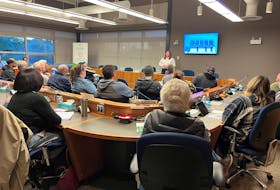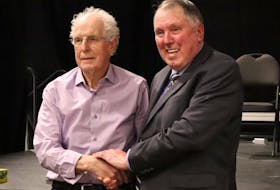Editor’s note: Due to privacy concerns, the name of the woman interviewed in this story has been withheld.
“I just felt so tired – all the time.”
Being homeless at the age of 16 was a defining experience for a woman who grew up in Halifax and now lives in Kings County. She experienced addiction and an overdose while homeless and now sees many youths in Kings County facing the same challenges.
She sees their struggles as a cry for help, and wants them to hear her story, and know it can get better. But even so, thoughts and fears stemming from her time without a home still linger.
“I’m still affected by the time I was homeless. Some of those thoughts are gone, but some never really go away,” she says.
Physical and emotional exhaustion
“I had my backpack, and that was pretty much it.”
After running away from home at the age of 16, she couch-surfed with friends in Dartmouth. She describes this time as physically and emotionally exhausted.
She’d often stay on her friends’ couches and says she was lucky her friends were there for her when she found herself in need of a place to sleep. She says other youth often aren’t so lucky.
Addictions soon followed as she looked for ways to cope with her new life and were easy to fall into since she grew up surrounded by them.
“By that time, I was drinking a lot. I told myself it was social, but I was a raging alcoholic by the age of 16 and became addicted to drugs,” she says.
Read More:
• The invisible homeless: Emergency shelter not only solution to youth homelessness in Kings County
• Safe spaces and sense of belonging vital for LGBTQ+ youth
Lack of sleep and missing school
“I often only got four hours of sleep a night. And that’s when I had a place to stay.”
She worked backshift to put herself through high school, often sleeping less than four hours per night. By graduation, she’d missed over 250 full days of school, but said she found people who understood her better than the affluent circles of kids who didn’t seem to get her struggles.
“The smokers got it, and the kids that wore Hollister just didn’t. Those people accepted me, literally fed me sometimes, and the others wanted to ostracize me. Where was I supposed to go?” she says.
When teachers who started the year treating her as a top student began discouraging her from even attending their classes, she took it as a challenge, but realizes it could have had a very different effect on her.
“That’s the last thing a student that actually made it to school needs to hear,” she says.
Addictions contributed to mental health challenges
“If two or three would help, maybe the whole bottle was better.”
Thoughts like this would run through her mind as she struggled with anxiety and addictions which, together, meant her mental health was in a precarious state.
She put herself in the hospital for suicidal ideations and an overdose caused by drugs her doctor had prescribed her for severe anxiety.
“Did I actually want to die? No, but I really wanted help. I needed someone to help me find the help I needed,” she says.
Now, living in the Annapolis Valley, she hears of similar overdoses and suicides and wonders if these, too, are cries for help.
“This could be a direct relation to how much the system is failing us, especially for youth going through life changes. That’s when you need support the most,” she says.
Another layer of a complicated problem

“I was homosexual, but also homophobic.”
As she navigated high school, she was approached by another girl who asked if she was gay.
Months after yelling at this young girl, the two started dating.
She says schools she went to instilled in her that being gay was wrong and, for many years, she avoided gay people and her own queerness, seeing it as yet another struggle.
“You’re homeless, you’re an addict, and then on top of that, you’re going through the experience of realizing you’re queer. That’s a hard time,” she says.
She still doesn’t introduce her partner to people in Annapolis Valley because of stigmas she continues to witness, and that a safe space would help young queer teens find like-minded peers.
“There would be a sense of community, which is so hard to find for any minority,” she says.
What would have helped
“I was always very afraid to speak to professionals.”
She says the lack of absolute confidentiality was her biggest source of anxiety and led her to distrust the system.
When she was completing mandatory sessions, she asked her psychiatrist if her comments were confidential. The answer she received was ambiguous and meant her parents could be contacted if the psychiatrist felt it necessary.
“I felt like they were doing exactly what my family did, which is what I ran away from,” she says.
“In order for the youth to deal with their challenges, they need to feel safe. If the (professional) contacts their parents, that can feel harmful if their home situation isn’t a good one.”
Being introduced to a role model who’d been through homelessness and successfully come out of it could also help youth going through hard times.
“That’s the mindset we need to instil in more people in these situations. Show them you were them once, and prove to them they can rise up,” she says.
Working through emotional scars an ongoing process
“I never feel anything I do is good enough, even though I’m setting goals and meeting them.”
She’s still impacted by emotional scars from her experience with homelessness and fears of abandonment. She worries everything she’s fought for could be lost.
And, when she sees friends sleeping in unregistered cars with flat tires because they’ve got no money for new ones, it seems like a very real fear.
Still, she is proud of what she has accomplished on her own, having navigated her life with little support outside her circle of friends, who she says have been with her every step of the way.
“It’s scary to think this empire you’ve built yourself can so easily be taken away,” she says.
“But I’m a fighter, and I’ll keep on fighting.”









